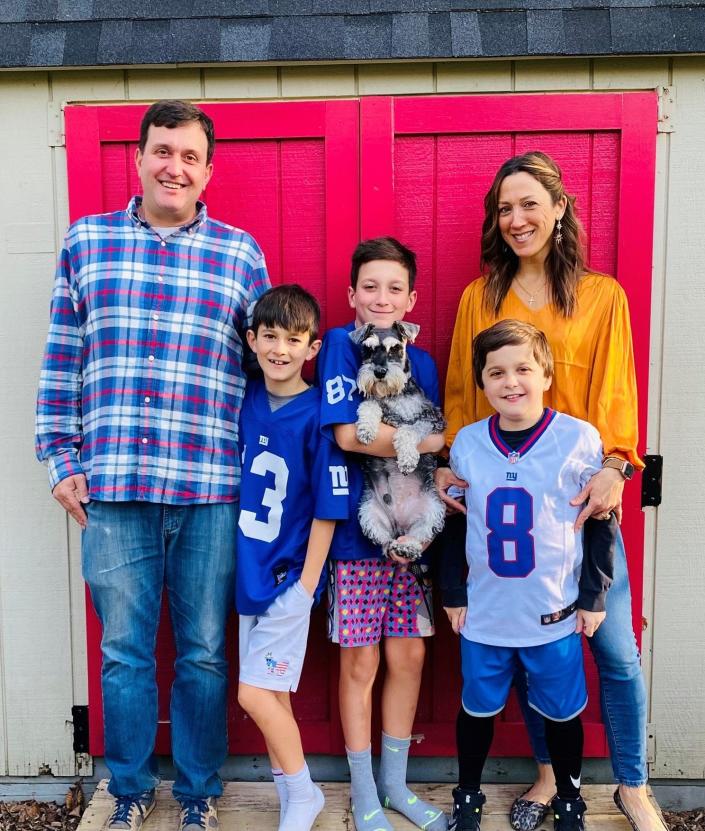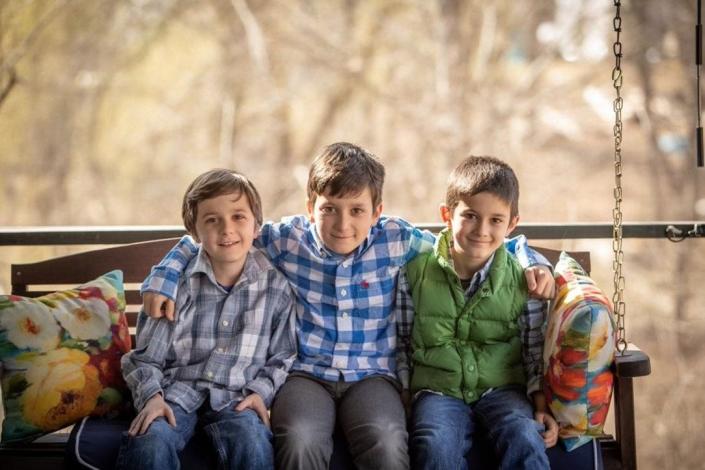When Conner Curran was first diagnosed with Duchenne muscular dystrophy at age 4, his parents were told there was nothing they could do to change his life’s course.
Jessica and Chris should enjoy their son as much as they could, the doctor said. In a few years, Conner would lose the ability to walk, then to move his arms and eventually, in his teens or 20s, to breathe. No other future was possible, they were told.
Luckily, that’s not how things are working out.
The treatment of Duchenne’s is in the midst of a revolution, bringing hope to a disease that inevitably left boys in a wheelchair around their 10th birthday. Few made it to 25.
Eight years ago, when Conner, of Ridgefield, Connecticut, was diagnosed there were just five drugs under development. Gene therapy to address the disease’s root cause was a distant dream.
Now, there are 50 treatments in the pipeline, and the first gene therapy has a chance of winning approval from the Food and Drug Administration next month, promising to transform the future for younger boys with Duchenne’s.
Though still a devastating diagnosis, the trajectory of someone with Duchenne’s is suddenly unclear.

Duchenne Muscular Dystrophy affects 12,000 to 15,000 children and young adults in the United States and about 300,000 worldwide.
It’s caused by a mutation in the dystrophin gene, which makes a protein essential for muscle function. Dystrophin essentially acts as a shock absorber. Without that protein, muscles can’t repair themselves, so damage accumulates over time.
Duchenne’s is typically genetic, passed down from a mother to a son, because the gene sits on the X chromosome, which also determines sex. If a girl inherits a defective copy of the dystrophin gene, she has a second X chromosome to help her make the protein. But boys have only one X, so they have no backup.
Story continues
In Conner’s case, the disease was simply genetic bad luck. Jessica doesn’t carry the defective gene. That means the other two Curran boys – Kyle, Conner’s twin, and William, two years younger – aren’t affected.
Five years ago, Conner became the first patient in a Pfizer clinical trial designed to trigger muscle cells to produce the dystrophin protein.
The approach isn’t a cure. Eventually, muscle cells with the corrected gene may get crowded out and replaced by uncorrected ones.
But everyone agrees that current treatment needs improving. For the last 30 years, steroids have been the primary treatment, leading to bone health issues, short height and increased weight, among other side effects. The drugs don’t directly affect the underlying cause of the disease.
Now 12-and-a-half, Conner, who improved for a while after his gene therapy treatment, struggles again to climb a flight of stairs. But the fact that he hasn’t lost ground for five years and isn’t in a wheelchair as he approaches adolescence defies every expectation for a Duchenne’s kid.
“This is going to give these kids meaningful benefit for 5-plus years,” said Chris Curran, who works in the maintenance department for the town of Lewisboro, New York. If scientists can figure out how to give boys like Conner repeat doses, “this could be a solid treatment for them for the rest of their lives.”

Debra Miller, who founded CureDuchenne after her son was diagnosed in 2002, has been helping raise money to support treatment development ever since. She compared the change she’s seen to a climb up Mount Everest.
“The first 10 years of CureDuchenne was getting to base camp. Now we’re up to Peak 1 or Peak 2,” she said. “The good news is, we’re above the clouds. We can see the summit.”
But the work’s not done yet.
Four companies are currently developing gene therapies for Duchenne’s. Sarepta Therapeutic’s experimental drug SRP-9001 will be the first considered by the FDA, on May 12.
Every disease requires a distinctive gene therapy and each company has a slightly different approach, so the long-term prognosis for the treatment and the patients remains uncertain.
Gene therapy is “exciting and a little bit nerve-wracking at the same time,” said Dr. Peter Marks, who runs the FDA division that oversees gene therapy.
Some gene therapies for other conditions have not been permanent fixes, while in a few other cases, patients later developed cancers. One patient in the same Pfizer trial as Conner died after treatment. His disease was already fairly advanced – he was no longer able to walk and his heart function was “very poor,” Dan Levy, Pfizer’s program lead for the treatment, said. Inflammation triggered by the therapy led his heart to stop functioning.
Another young man in a different trial also died after treatment. Companies have apparently collaborated to share their safety data to better understand who might be at risk from gene therapy.
These risks highlight the need for FDA to carefully regulate gene therapy, Marks said. But the agency is willing to accept some uncertainty in cases like Duchenne’s, where the outlook is otherwise so dire.
“A therapy that can prevent that (outcome) or delay that – that is worth a certain amount of uncertainty,” Marks said.
Duchenne’s challenges
Although gene therapy can hopefully stop a boy’s decline, it can’t restore muscle cells that have already been damaged, said Dr. Barry Byrne, the Muscular Dystrophy Association’s chief medical advisor.
So, once there’s an effective treatment, catching the disease early will become extremely important. Advocacy groups, including the Muscular Dystrophy Association, which funds research and supports people with neuromuscular diseases, are lobbying states nationwide to add a genetic screen for Duchenne’s to their newborn screening panels.
For all gene therapies, the biggest challenge remains getting the therapy into the right cells.
Most current therapies use harmless viruses to deliver the therapy. But some boys have already been exposed to the viruses used for delivery. Their immune systems already know how to attack the virus and would make the therapy useless.
This also means that a boy can’t be dosed twice, even if the benefits start to fade.
The Muscular Dystrophy Association and others are working with researchers and drug companies to overcome this limitation.
At this point, it’s not clear how long the treatment will help.
“We will not know for another 10 to 15 years how durable this is going to be,” said Sarepta CEO and president Douglas Ingram. “We can’t wait for that long (to pursue approval) because we’ll lose a generation waiting.”
Another challenge is the gigantic size of the dystrophin gene – too big to fit in the viruses typically used to carry gene therapies. Each company has figured out a different way to shorten the gene. Hopefully, Byrne said, they will all work equally well, but that has yet to be determined.
Dr. Hansell Stedman, a Duchenne’s researcher at the University of Pennsylvania, is developing a gene therapy based on a different gene, utrophin, which he hopes will be a safer, more effective approach. He’s particularly concerned about boys whose bodies make no dystrophin at all. For them, he said increasing the utrophin protein, which their bodies already make, is likely to be much safer.
It’s also not yet clear how much the therapy will cost. A gene therapy approved in December to treat the bleeding disorder hemophilia was priced at an eye-popping $3.5 million. Drug companies argue that high prices are justified for gene therapies that will hopefully be needed just once and that save the cost of other ongoing treatments and support, which typically run at least $200,000 a year for Duchenne’s.
“Particularly with rare diseases like Duchenne, the actual cost to the health care system is going to be negligible in relation to the benefit that these kids are going to get,” Ingram said.
But Byrne said the price still needs to come down substantially.
“We have to work on how to make it affordable to everyone, so no children are left behind because of inequities in health care coverage,” he said.

Chris and Jessica, a first grade teacher, said they were terrified when they were told Conner might qualify for Pfizer’s gene therapy trial.
With less than a day’s head’s up, the Currans hopped on a plane to get to Duke Medical Center so Conner could be screened to ensure he didn’t already have antibodies to the virus that deliveries the therapy.
Staring at her son asleep in a hotel bed, Jessica started to get cold feet.
“Are we doing the right thing? Are we crazy for doing this?” she remembered in a recent Zoom call, starting to cry at the memory.
“If Conner could make this decision, if he could be an adult making this decision, would he want us to go for it, knowing the trajectory of this horrific monster?” Chris asked her then.
“We gotta do it,” he continued. “You’ve got to take risks with Duchenne, because if you don’t, we know what’s going to happen.”
Conner was accepted into the trial and became its first patient. During the two-hour infusion of “muscle juice,” the first grader sat happily playing video games and eating pickles. “No regrets,” Jessica said.
The treatment was a psychological boost to Conner, in addition to a physical one.
A few months later, Conner had to write about the best thing that had happened so far in second grade. He wrote: “I don’t watch the kids play anymore. Now I can play, too.”

Conner would love to get another dose of muscle juice. His mobility has started to slip and stairs have gotten difficult again.
But he can’t get the same treatment a second time.
And not all the boys who need gene therapy can get it yet.
Sarepta’s treatment is aimed at boys who are still walking – roughly half of those with the diagnosis. Those in wheelchairs won’t benefit from the first generation of gene therapies. Neither will kids who already have antibodies to the viruses being used by the companies, nor the rare few with conditions that would make the treatment dangerous, Ingram said.
Their first studies have been in children ages 4-7. Sarepta has already moved down in age to children as young as 3 and is getting ready to start a trial in those who have already lost the ability to walk.
“It’s extraordinarily important to dose as early as you can so you can stop the damage, but it’s equally pressing that we get to these older kids,” Ingram said. “They don’t have the time to wait.”
The company also hopes to be able to dose boys who already have antibodies to their viral vector, by clearing out those antibodies with drugs. “If so, by the end of next year, we would be able to dose all but 5% of kids with Duchenne,” Ingram said.
Sarepta is asking for FDA approval before it has completed its late-stage research trial; Pfizer is being more cautious, waiting until it has complete Phase 3 data before it requests approval. Pfizer’s trial results should be ready in early 2024.
“At this point, we do recognize the risks,” Pfizer’s Levy said. “We want to focus right now on the population that we feel we can treat very safely.”
Jessica and Chris told Conner when he was relatively young about the monster he was facing. They didn’t want him to read about his disease on Google or hear his prognosis from a school friend and give up hope.
Instead, the pair set out to fundraise, lobby and otherwise support the people who were working toward effective approaches to Duchenne. “Google has not caught up to gene therapy,” Chris told Conner. “We’re going to change what Google is saying.”
It’s not yet clear whether Conner’s disease has stabilized or just slowed. “If we could take Conner right now where he is, we would be so grateful,” Jessica said.
For boys who are already in wheelchairs, gene therapy won’t get them walking again, Jessica said, “But if they can brush their own teeth, they can feed themselves, pick up their phone, hug their mom …”
Contact Karen Weintraub at [email protected].
Health and patient safety coverage at USA TODAY is made possible in part by a grant from the Masimo Foundation for Ethics, Innovation and Competition in Healthcare. The Masimo Foundation does not provide editorial input.
This article originally appeared on USA TODAY: Duchenne muscular dystrophy treatments, gene therapy spark hope